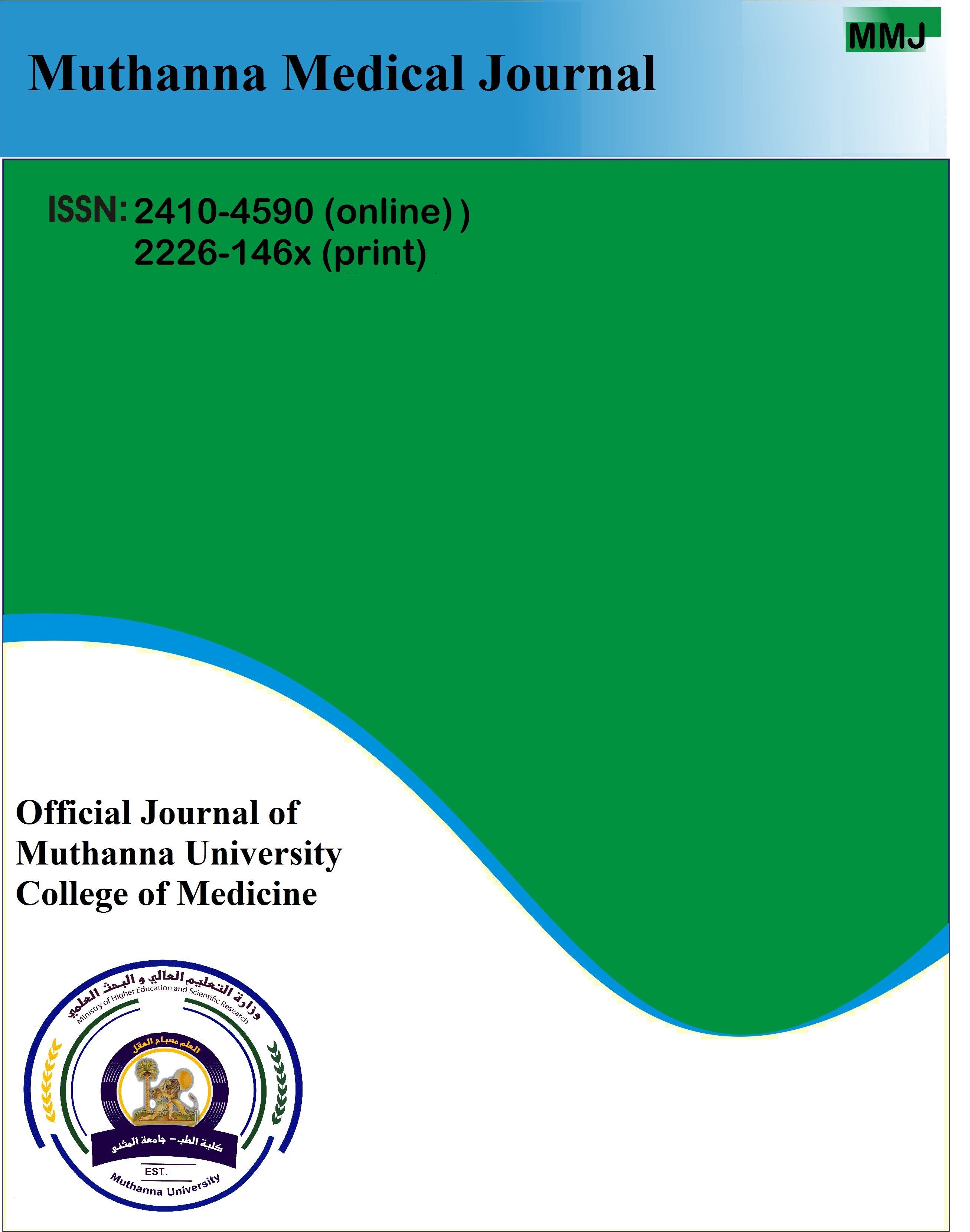Research article
Authors
Baseem Natheer Abdulhadi 1
Copyright © 2023 Abdulhadi. This is article distributed under the terms of the Creative Commons Attribution License http://creativecommons.org/licenses/by/4.0), which permits unrestricted use, distribution, and reproduction in any medium, provided the original work is properly cited
Abstract
In otolaryngology, epistaxis—nosebleeds—are prevalent and severe. It is estimated that 10% to 60% of people will have at least one serious episode in their lives. This research will question people on how they stop nosebleeds and compare their replies to the medically recommended practice. This cross-sectional study assessed 105 paramedics in Baghdad's Emergency Wards, focusing on their demographics, education, and experience in managing epistaxis (nosebleeds). Key evaluation areas included the patient's position, pressure application on the nose, duration and method of pressure, use of nasal packs, ice application, and decision-making about when to call specialists. Their skills were scored on a scale from 'Very Good' to 'Bad', providing insights into their proficiency and variations in epistaxis management practices. This study, conducted from October 2022 to June 2023 in Baghdad, involved 105 paramedics in Emergency Wards, predominantly with less than 5 years of experience. It focused on assessing their first aid measures for epistaxis (nosebleeds), revealing varied practices like positioning, nasal pressure, and use of ice. Only a small fraction demonstrated very good knowledge in these procedures. Statistical analysis indicated a significant correlation between the paramedics' gender and educational level with their proficiency in handling epistaxis, but not with their duration of work in the Emergency Ward. Inconclusion, this research illuminates Baghdad paramedics' first aid practices, identifying strengths and places for development, particularly in emergency medical protocols. To provide the best emergency treatment, paramedics need ongoing training.
Keywords: Practice, First aid, Epistaxis, Nursing, Staff working, Emergency departments
- Boscoe EF, Cabrera-Muffly C. Otolaryngology in the medical school curriculum: Current trends in the United States. Laryngoscope. 2017 Feb;127(2):346-348. doi: 10.1002/lary.26099. Epub 2016 Jun 14. PMID: 27296300.
- Ichimura K, Kikuchi H, Imayoshi S, Dias MS. Topical application of timolol decreases the severity and frequency of epistaxis in patients who have previously undergone nasal dermoplasty for hereditary hemorrhagic telangiectasia. Auris Nasus Larynx. 2016 Aug;43(4):429-32. doi: 10.1016/j.anl.2015.12.001. Epub 2015 Dec 29. PMID: 26739947.
- Department of Health. NHS reference costs 2015 to 2016. 2016. http:// tinyurl.com/y8qnxz5n (accessed 13 December 2017)
- Fawdon H, Adams J. Advanced clinical practitioner role in the emergency department. Nurs Stand. 2013 Dec 18;28(16-18):48-51. doi: 10.7748/ns2013.12.28.16.48.e8294. PMID: 24345153.
- Send T, Bertlich M, Eichhorn KW, Ganschow R, Schafigh D, Horlbeck F, Bootz F, Jakob M. Etiology, Management, and Outcome of Pediatric Epistaxis. Pediatr Emerg Care. 2021 Sep 1;37(9):466-470. doi: 10.1097/PEC.0000000000001698. PMID: 30624421.
- Tunkel DE, Anne S, Payne SC, Ishman SL, Rosenfeld RM, Abramson PJ, Alikhaani JD, Benoit MM, Bercovitz RS, Brown MD, Chernobilsky B, Feldstein DA, Hackell JM, Holbrook EH, Holdsworth SM, Lin KW, Lind MM, Poetker DM, Riley CA, Schneider JS, Seidman MD, Vadlamudi V, Valdez TA, Nnacheta LC, Monjur TM. Clinical Practice Guideline: Nosebleed (Epistaxis). Otolaryngol Head Neck Surg. 2020 Jan;162(1_suppl):S1-S38. doi: 10.1177/0194599819890327. PMID: 31910111.
- Morgan C, Barry C, Barnes K. Masters programs in advanced nursing practice: new strategies to enhance course design for subspecialty training in neonatology and pediatrics. Advances in Medical Education and Practice. 2012; 3:129–137.
- Alshehri KA, Alqulayti WM, Saggaf OM, Enani MZ, Bahatheq AK, Abdalwassie LK, et al. Awareness of first‑aid management of epistaxis among school students in Jeddah, Saudi Arabia. Saudi Surg J 2019;7:108-12.
- McGinnis, S. L., et al. (2018). “Workforce Turnover in Emergency Medical Services: Trends and Implications.” Journal of Emergency Medicine, 45(3), 433-440.
- American Red Cross. (2019). “First Aid/CPR/AED Participant’s Manual.
- Walker, T. J., et al. (2021). “Best Practices in the Management of Epistaxis.” Annals of Otolaryngology, 130(1), 67-73.
- Smith, R. A., & Johnson, P. D. (2019). “Nasal Packing in Epistaxis: Review of Current Techniques.” Laryngoscope Investigative Otolaryngology, 4(2), 215-219.
- Jones, E. R., et al. (2020). “Assessment of Emergency Medical Response Competencies.” Prehospital Emergency Care, 24(4), 522-530.
- Harris, M. A., et al. (2017). “The Impact of Education on Clinical Competencies in Paramedics: A Systematic Review.” Emergency Medicine Journal, 34(8), 546-554.
- Anderson, K. L., et al. (2018). “Continuous Training and Its Impact on Emergency Medical Technicians’ Competencies.” Journal of Continuing Education in the Health Professions, 38(2), 123-130.

